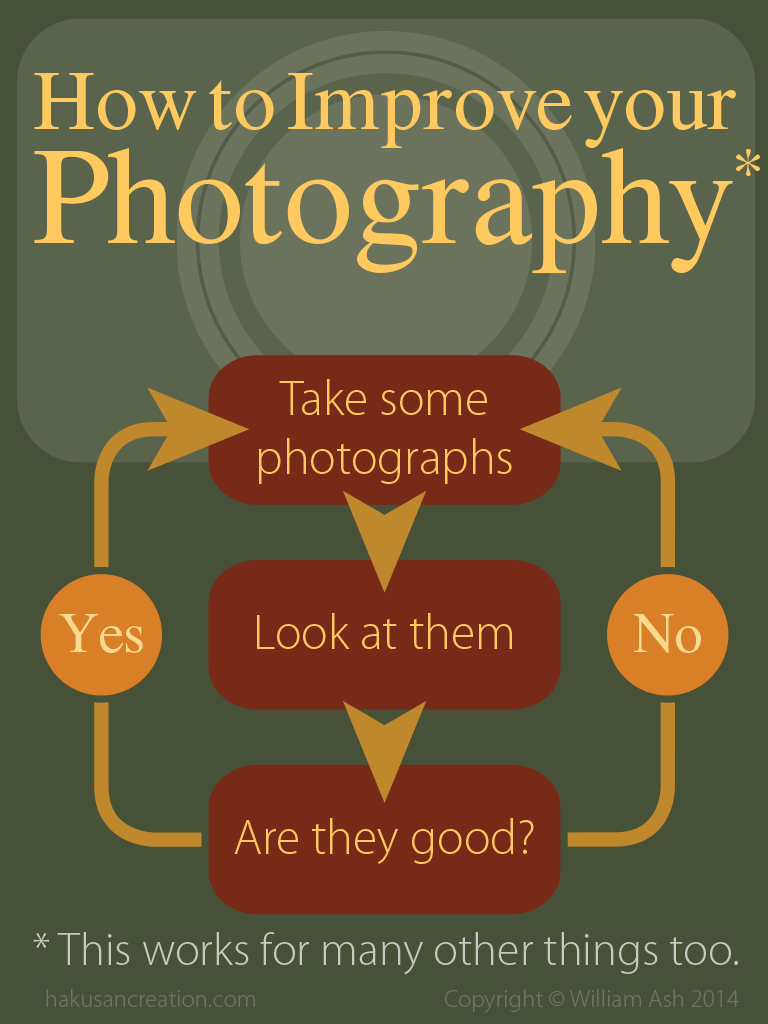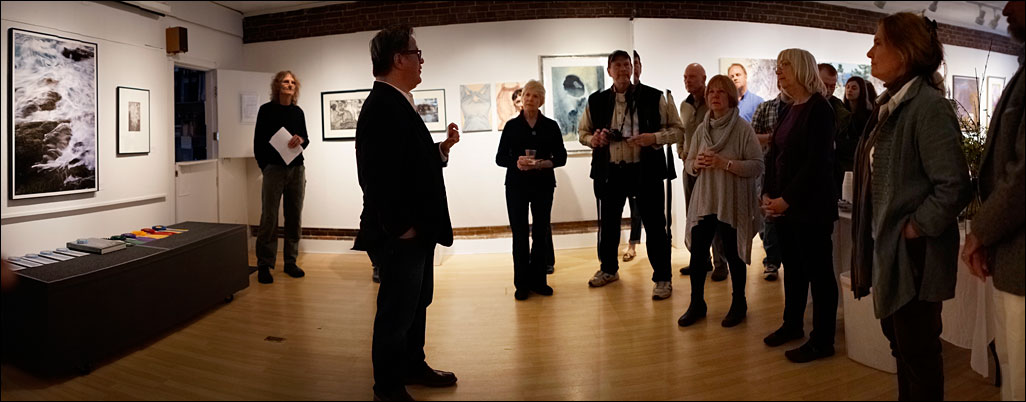 I was honored this week by having one of my photographs included in Art2014 at the Harlow Gallery in Hallowell, Maine. The show is a wonderfully eclectic collection of 32 artworks from 25 Maine artists. The award ceremony was led by the juror Andy Verzosa (center) of Aucocisco Galleries in Portland, Maine. The show runs until the end of May.
I was honored this week by having one of my photographs included in Art2014 at the Harlow Gallery in Hallowell, Maine. The show is a wonderfully eclectic collection of 32 artworks from 25 Maine artists. The award ceremony was led by the juror Andy Verzosa (center) of Aucocisco Galleries in Portland, Maine. The show runs until the end of May.
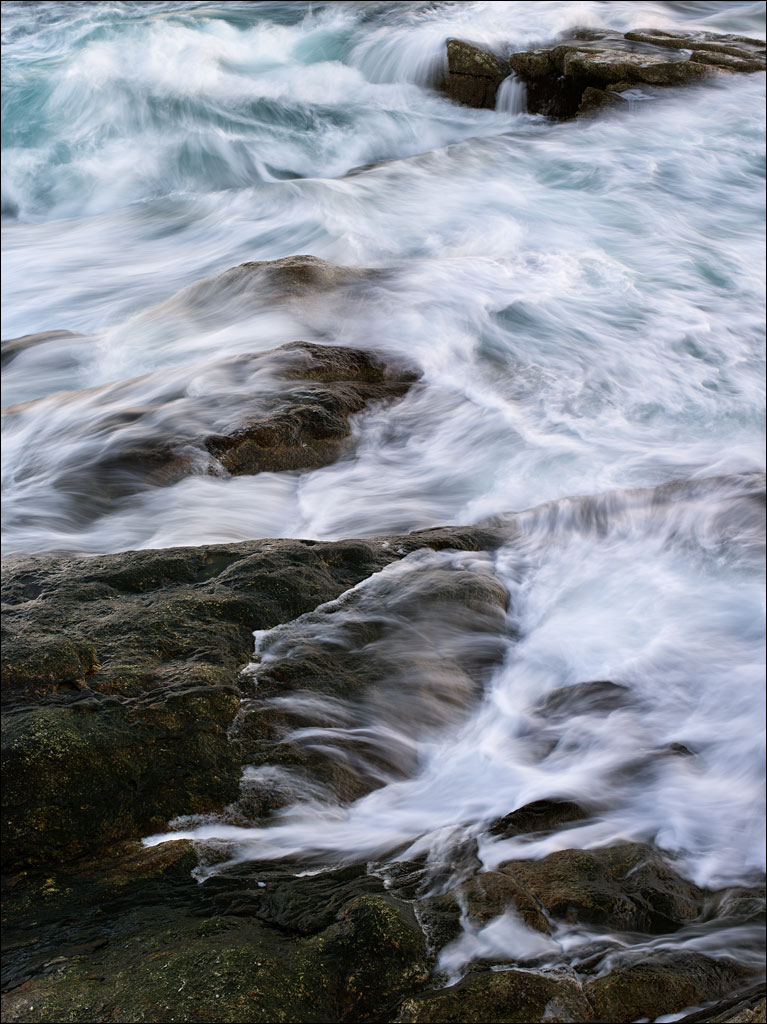
Category Archives: Hakusan Creation
Maine Photography Show 2014
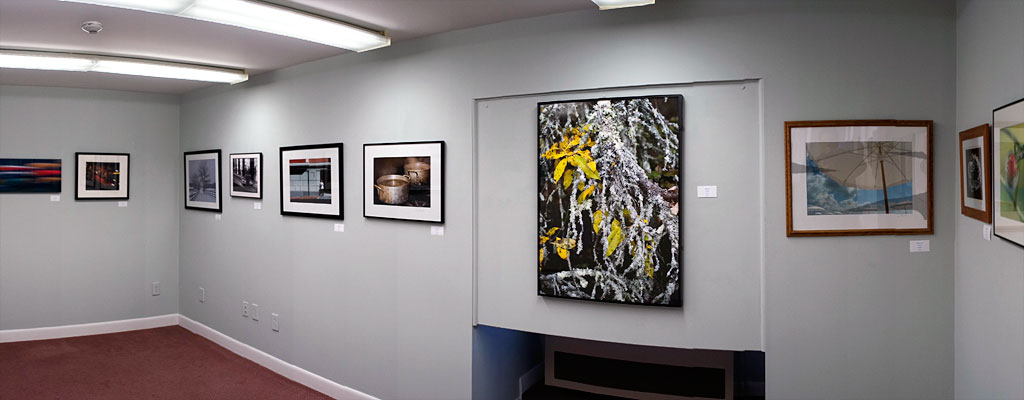 I had the good fortune to have one of my photographs selected for the Maine Photography Show. The show runs from April 12th to May 2nd at the Boothbay Region Arts Foundation gallery in Boothbay Harbor.
I had the good fortune to have one of my photographs selected for the Maine Photography Show. The show runs from April 12th to May 2nd at the Boothbay Region Arts Foundation gallery in Boothbay Harbor.
How to Improve your Photography
Carmen Elisabeth Puchianu—Translations Poetry Festival
 This is one of a series of portraits I did for Translation: Bates International Poetry Festival, 2011. Carmen Elisabeth Puchianu is a wonderful poet from Romania. Her dynamic reading and humor were captivating. You can see her performance at the Translations website as well as the performances from the other seven poets that appeared. An iBook of the festival for the iPad can be downloaded here: Translations – Claudia Aburto Guzmán & William Ash. A pdf version of the book is on the Translations website. Click on the image for a lager view.
This is one of a series of portraits I did for Translation: Bates International Poetry Festival, 2011. Carmen Elisabeth Puchianu is a wonderful poet from Romania. Her dynamic reading and humor were captivating. You can see her performance at the Translations website as well as the performances from the other seven poets that appeared. An iBook of the festival for the iPad can be downloaded here: Translations – Claudia Aburto Guzmán & William Ash. A pdf version of the book is on the Translations website. Click on the image for a lager view.
Futon Daiko Wins a Design Award
The Book Designer.com has awarded the best non-fiction cover for July 2013 to Futon Daiko: A Japanese Festival. The site, run by Joel Friedlander, is a wonder source of information for independent publishers. More about the Book Designer and this award can be found at The Book Designer.
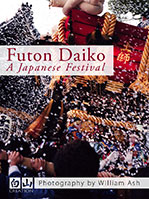

Translations: Bates International Poetry Festival, 2011
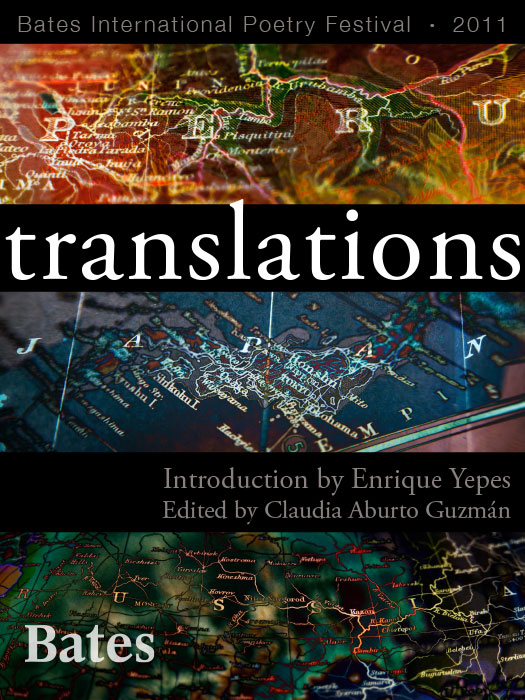 Translations: Bates International Poetry Festival 2011 documents this creative event featuring eight poets from around the world: Polina Barskova (Russia), Rhea Côté Robbins and Robert Farnsworth (United States), Francisca López (Spain), Naomi Otsubo (Japan), Danny Plourde (Canada), Carmen Elisabeth Puchianu (Romania), and Miguel Ángel Zapata (Peru). These poets spent five days performing their poetry in their native language and interacting with students and faculty on translations of their work. Contained in this volume are the original poems and the translations that came from this collaboration. Essays on the meaning of festivals, insights into translations, translation in pedagogy, and reflections on multilingualism from Enrique Yepes, Jane Costlow, Sarah Strong, Claudia Aburto Guzmán, Laura Balladur, Francisca López, and Raluca Cernahoschi round out this fascinating volume.
Translations: Bates International Poetry Festival 2011 documents this creative event featuring eight poets from around the world: Polina Barskova (Russia), Rhea Côté Robbins and Robert Farnsworth (United States), Francisca López (Spain), Naomi Otsubo (Japan), Danny Plourde (Canada), Carmen Elisabeth Puchianu (Romania), and Miguel Ángel Zapata (Peru). These poets spent five days performing their poetry in their native language and interacting with students and faculty on translations of their work. Contained in this volume are the original poems and the translations that came from this collaboration. Essays on the meaning of festivals, insights into translations, translation in pedagogy, and reflections on multilingualism from Enrique Yepes, Jane Costlow, Sarah Strong, Claudia Aburto Guzmán, Laura Balladur, Francisca López, and Raluca Cernahoschi round out this fascinating volume.
Use the following link to go to the Apple iBookstore: Translations – Claudia Aburto Guzmán & William Ash
Futon Daiko—The Picture Story
How do you separate luck and talent? Talent can get you good images, competent images. But those magic moments, where do they come from? Personally, I feel those pictures are given, rather than taken.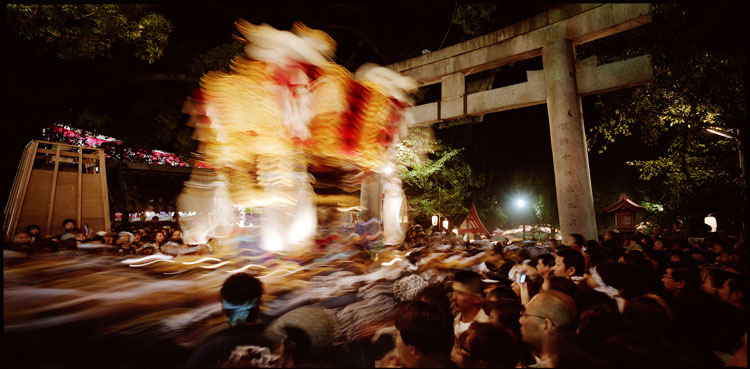 This image from Futon Daiko: A Japanese Festival is a result of many chance factors. The crowd was huge and pushed me back against a stone lantern; the force of the crowd split the lens hood on another camera in my bag. Needing some kind of support to make a long exposure—a tripod was not going to work—I clamped my camera on a steel I-beam supporting a branch of an 800-year-old camphor tree at arms length above my head. So far, so good. Just one problem. How do I frame the picture? I could not see through the viewfinder.
This image from Futon Daiko: A Japanese Festival is a result of many chance factors. The crowd was huge and pushed me back against a stone lantern; the force of the crowd split the lens hood on another camera in my bag. Needing some kind of support to make a long exposure—a tripod was not going to work—I clamped my camera on a steel I-beam supporting a branch of an 800-year-old camphor tree at arms length above my head. So far, so good. Just one problem. How do I frame the picture? I could not see through the viewfinder.
For those without a photography background, there is a technique or style known as shooting full frame. The photographer frames the image in the camera and does not recompose or crop later. I have used this style for my entire career—an unnerving way to work as there are no fixes later. So guessing the camera position, guessing the focus, guessing the exposure, here is the result, just as the camera saw it.
How much of this image is mine? How much luck? How much the good graces of the god Hachiman? I doubt the question can ever be answered. But I feel blessed to be there to take the picture, or maybe to receive it.
Futon Daiko: A Japanese Festival
We are pleased to announce our new publication that has just been released in the Apple iBookstore: Futon Daiko: A Japanese Festival.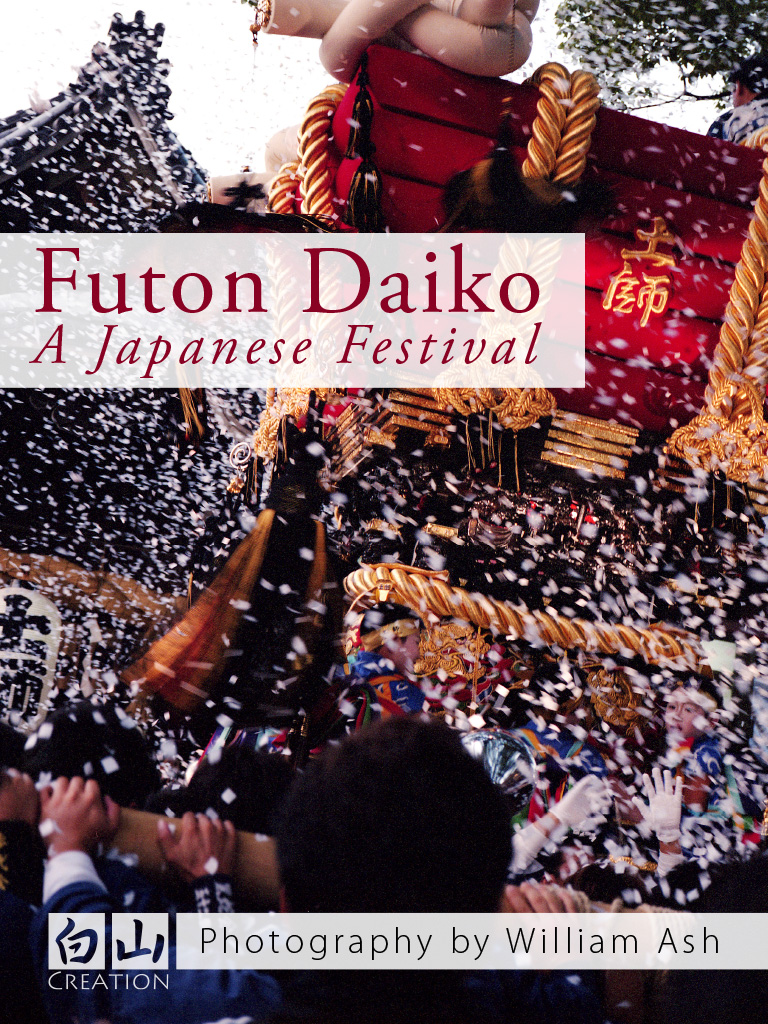 Japan has an ancient and mysterious culture that seems impenetrable to the outsider. Experience is the essence of the native Japanese religion of Shinto. This volume of photographs explores the Japanese festival, or matsuri, embodied in shrine Shinto. The book follows the two-day Futon Daiko festival at Mozu Hachiman Shrine in Sakai, Japan, after an introduction to another variation of the festival at Ogikubo Hakusan Shrine in Tokyo. William Ash’s photography shows the passion and power of these rites. The book provides a beautiful introduction to shrine Shinto with forty-six photographs, two illustrations, and an illustrated glossary.
Japan has an ancient and mysterious culture that seems impenetrable to the outsider. Experience is the essence of the native Japanese religion of Shinto. This volume of photographs explores the Japanese festival, or matsuri, embodied in shrine Shinto. The book follows the two-day Futon Daiko festival at Mozu Hachiman Shrine in Sakai, Japan, after an introduction to another variation of the festival at Ogikubo Hakusan Shrine in Tokyo. William Ash’s photography shows the passion and power of these rites. The book provides a beautiful introduction to shrine Shinto with forty-six photographs, two illustrations, and an illustrated glossary.
Welcome to Hakusan Creation
Welcome to the blog site of Hakusan Creation. We are an artist-run publisher exploring electronic publishing. The site is run by the photographer and designer William Ash and the writer and poet Naomi Otsubo. We hope you will find our work interesting. Welcome.

Hakusan, represented by the two Japanese characters in our logo, means “white mountain.” This comes from the name of a shrine in Tokyo where we were married. Hakusan is a sacred mountain in Japan.

